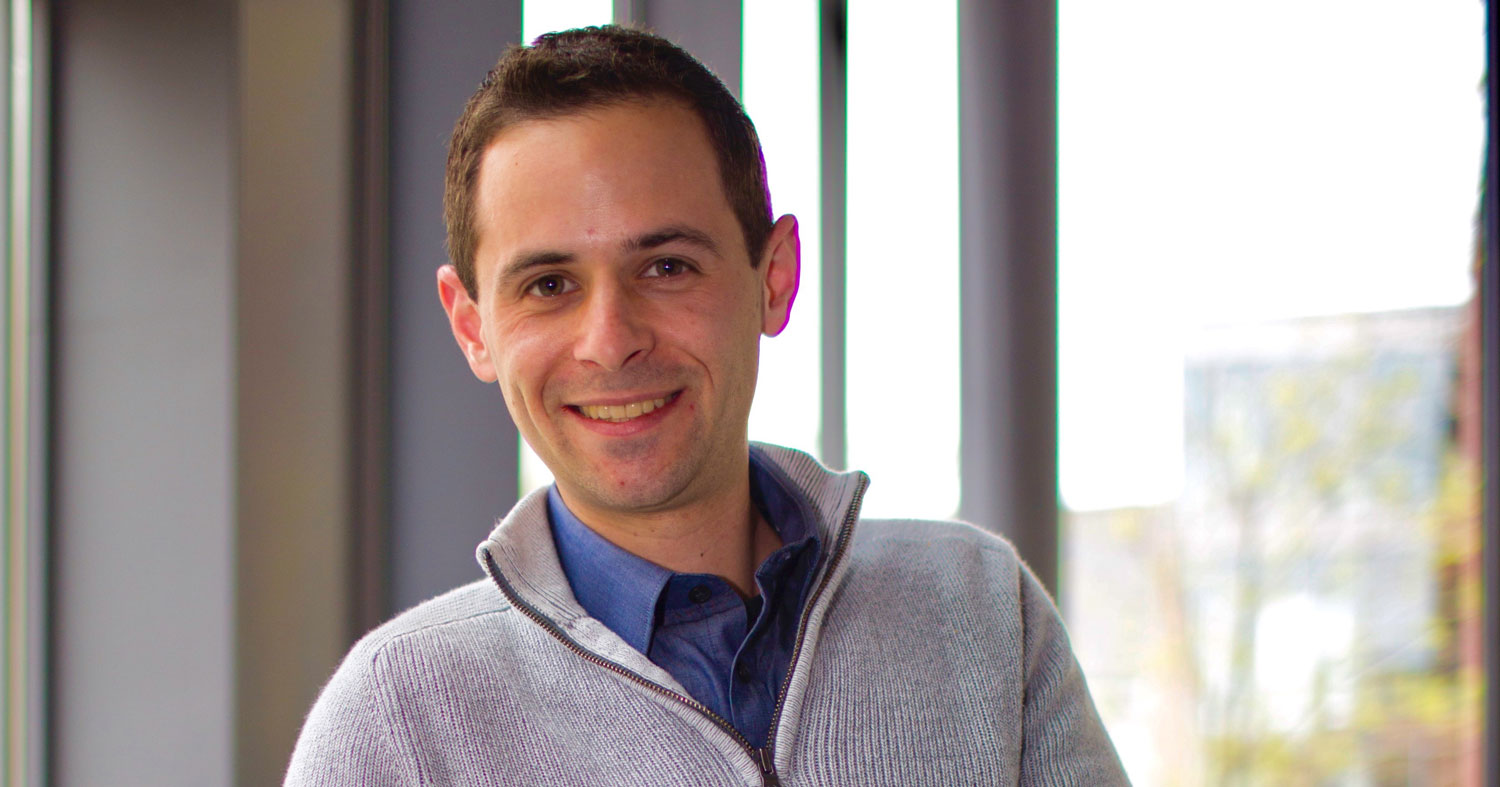From slug slime to medical adhesive
From slug slime to medical adhesive
This tough gel can stretch 20 times its length without breaking, which is more than what the most resilient rubber band can do.
Ben Freedman ’11 looks to nature to inspire engineering solutions
It is not uncommon for scientists like Ben Freedman ’11 to look to nature for engineering inspiration—including the development of a super tough surgical gel that can strongly adhere to wet and dynamic surfaces inside the body. Think about a beating heart, entangled tissues, collapsed lungs, damaged cartilage, and broken bones.
“Our hydrogel technology is based on the incredibly stretchy mucous that Dusky Arion slugs emit when they sense danger,” says Freeman, a post-doctoral fellow at the Wyss Institute for Biologically Inspired Engineering at Harvard University. “Our tough gel can stretch 20 times its length without breaking, which is more than what the most resilient rubber band can do.”
According to Freedman, many of the medical grade adhesives available now just aren’t tough or sticky enough, and they are rigid. They behave, as he says, like super glue. Because of this, they can kill cells. Fortunately, his research team’s tough gel addresses all of this and more. Health care practitioners can mold it into any shape, insert it into syringes, and then apply or inject it into a specific area. Although not commercially available yet, this tough gel is far along in the clinical study stage.
“The future of medicine is all about developing materials that respond to the way tissues heal,” Freedman adds. “It is rewarding to work on technology that will promote healing and drug delivery and make a difference in people’s lives.”

Ben Freedman ’11, currently a post-doctoral fellow at the Wyss Institute for Biologically Inspired Engineering at Harvard University.
Freedman enjoys many aspects of his work, from making gels and looking at tissue cultures to analyzing data and planning studies. He also appreciates interacting with extremely smart, motivated people with similar goals. Working with early career scientists and sparking their interest in innovative technologies is also a plus.
“It all comes back to my undergraduate education,” he adds, noting how he spent several summers working in the National Institutes of Health research labs. This was an opportunity presented to him through the biomedical engineering faculty, with whom he is still close. “If I hadn’t had access to great faculty and gone to Rochester, I wouldn’t be where I am today.”
— Kristine Thompson, 2019


